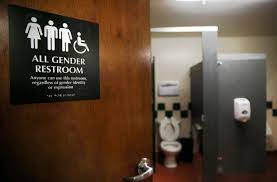The United States is facing a historic moment as the birth rate has dropped to its lowest point ever recorded in 2023. This alarming trend raises many questions about the reasons behind it and what it means for families across the country. The drop is attributed to rising living costs, especially affecting Millennials and Generation Z as they struggle with significant financial pressures that make starting a family more difficult.
The US Birth Rate Hit a Historic Low
Recent reports show that the birth rate in America has plummeted, reaching a historic low in 2023. According to the Center for Disease Control (CDC), this decline has been consistent, with approximately 2% fewer births each year from 2014 to 2020. The financial landscape for many families has shifted drastically, making it harder for parents, especially younger ones, to consider having children.
Why are Millennials and Gen Z Delaying Parenthood?
Millennials and Gen Z individuals often prioritize financial stability before starting a family. This generation is dealing with student loan debt, high housing costs, and rising prices for everyday essentials like daycare and groceries. For many, these financial hurdles mean pushing back the decision to have children, as they want to provide a stable environment for their future kids.
Americans Want More Kids—But Many Can’t Afford It
Despite the falling birth rate, many Americans actually express a desire to have more children than they currently do. A Gallup poll indicates that most people wish for larger families, with many believing that two kids is the ideal number. However, the rising costs of childcare and household necessities have created a barrier, leaving many families feeling stretched thin. It seems that financial concerns are at the forefront of this growing gap between desire and reality.
Financial Pressures and Their Impact on Family Planning
As families continue to grapple with economic challenges, the conversation about family planning is shifting. Childcare costs are now exceeding average salaries in some parts of the country. With both parents often working to make ends meet, the idea of having more children becomes daunting. Rising grocery bills and higher living costs are significant contributors to this dilemma, making it essential for policymakers to address these challenges to ease the burden on families.
A Growing Preference for Larger Families
Interestingly, public sentiment is changing regarding family size. Even though many families feel they cannot afford to have more children, a growing number of people are voicing their interest in larger families. This shift marks the highest preference for larger families noted since 1971. Black adults and more religious individuals are among those who are leaning towards wanting more children, indicating a cultural correlation with family planning trends.
The Need for Policy Solutions
Experts suggest that the issues affecting the birth rate in America require comprehensive approaches that consider more than just individual family choices. They argue that effective policy solutions are necessary to alleviate the financial pressures families face today. Whether through better support systems for childcare or financial subsidies for families looking to grow, it is crucial for both local and national governments to step up and address these challenges head-on.
Americans Are Finding Solutions
While the statistics paint a concerning picture, many Americans are actively seeking solutions to their family planning struggles. Local communities are initiating grassroots movements to create better support systems for families, including shared childcare resources and financial planning workshops. These efforts illustrate the resilient spirit of Americans as they navigate these trying times and seek to build the families they desire.
























